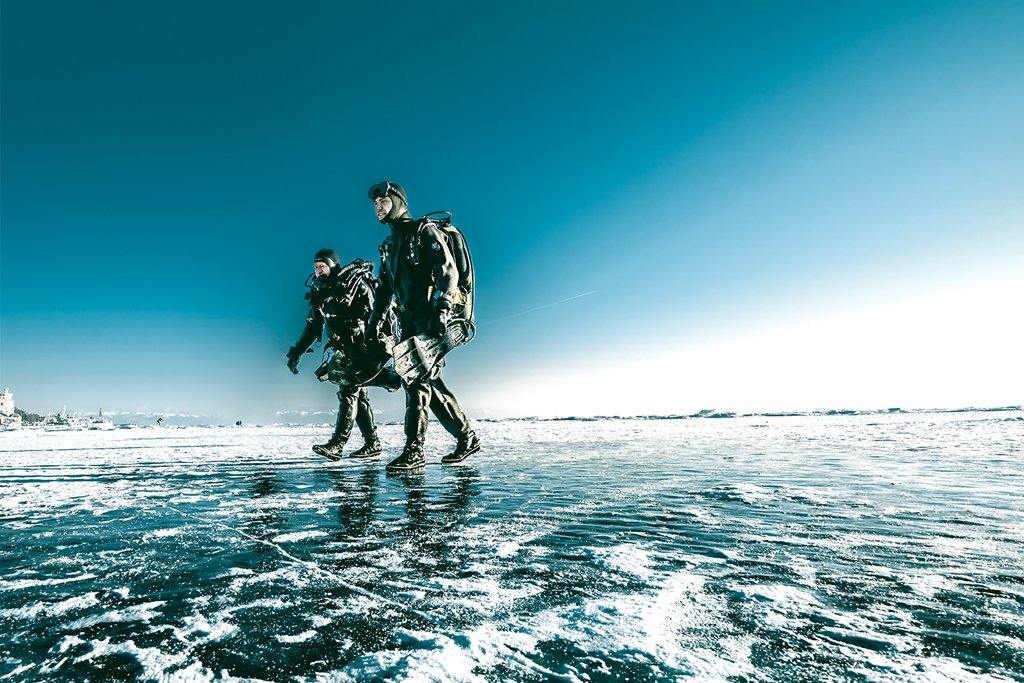
THE ULTIMATE TEST with Alfred Minaar
A test for man and material, photographer Alfred Minaar takes Delma on an incredible ice diving journey in Lake Baikal.
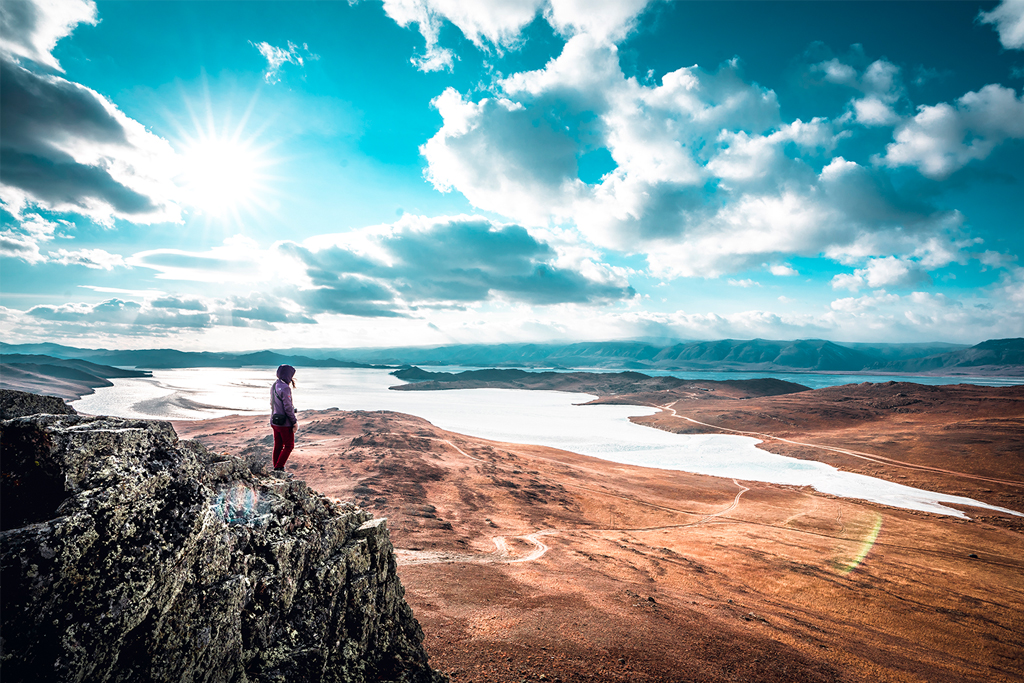
When Delma learned about Alfred Minaar’s “Alfie’s” plans to travel to the incredible Lake Baikal in Siberia, we were immediately intrigued by the prospect of participation. Having worked with Alfie, a dive instructor and photographer based in Bali’s Gili Trawangan for several years, we were excited to see Delma’s divers’ watches through his lens in a new setting. Diving in the freezing temperatures of Siberia into the world’s oldest and largest lake would be a real test and adventure for our timepieces, and of course for Alfie.
He explained to us that he was persuaded by his old friend Sasha who was determined to learn ice diving together and the unique yet slightly eerie beauty of lake Baikal in winter. He also knew diving somewhere north of Mongolia would be a far cry from the warm waters of the Indian Ocean he had grown accustomed to and it was clear the right equipment would be absolutely critical.
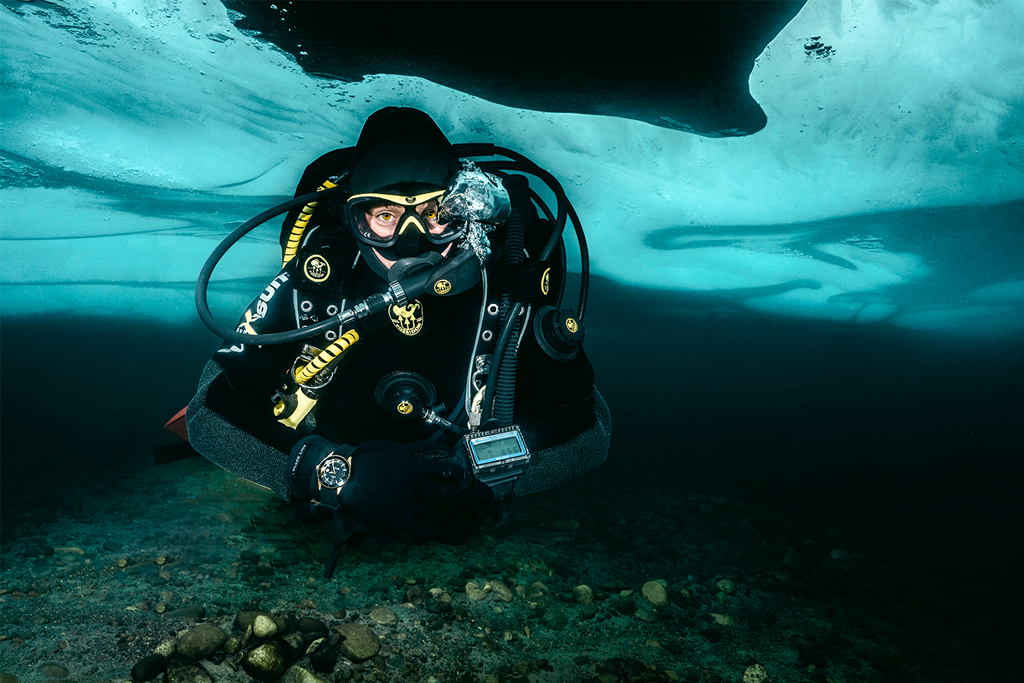
Planning progressed with Alfie attending the dive show BOOT where he discussed his idea with Jonas Brandt, CEO of Swedish dive gear brand Poseidon. Renowned for their dry suits, rebreathers and regulators, Poseidon has supported excursions in the North Sea oil rigs and complex Arctic Search and Rescue missions. With Delma and Poseidon behind him, Alfie’s confidence was building. He learned that Jonas is friends with former Soviet military diver Andrey Dimitrevich who was coincidentally also in Düsseldorf for the show. Despite a sense of skepticism, apparent even through a translator, Andrey agreed to accompany them provided they begin with his rigorous ice diving course. The last crucial connection at BOOT was made with German adventure videographer Nicolai Deutsch and the planning was complete. 10 days later the team took off for Moscow followed by an additional 5,000 km flight to Siberia.
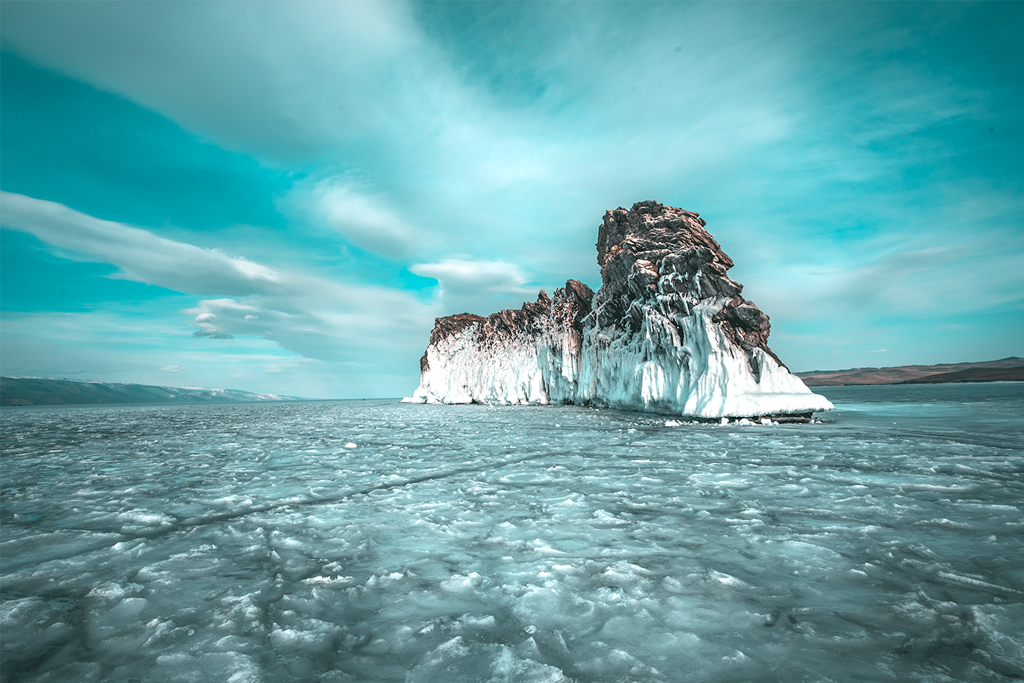
Upon arriving at the Dive Center Sval, Andrey told them about his over 40 years of diving in Russia and his bespoke training system which he designed before TDI and PADI had ice diving guidelines. A detailed explanation of the protocols of ice diving began to prepare them for their first dive in Russia, which he made clear would not be under ice. Unlike many other schools designed for tourists to have a quick ice diving experience, the DC Sval has a flawless 20+ year record and that would not be compromised.
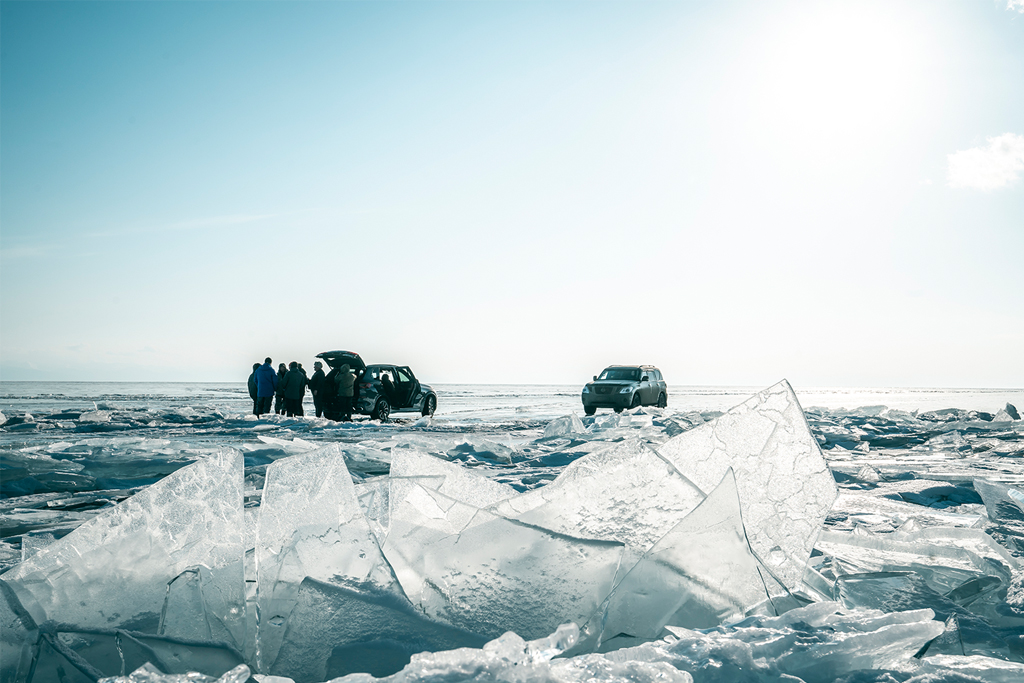
Nerves mounted as the team set out on a crisp, sunny 8°C day for their first dry suit dive, equipped with their Poseidon and Delma gear. Andrey wore a new Blue Shark III, Alfie a Shell Star and Sasha a Santiago. All three timepieces were vigorously tested for water resistance, the Blue Shark III withstanding pressure as deep as 4000m but ice was a new foe. The watches would back up elaborate dive computers and would make sure divers never lost track of time in crucial situations.
Lake Baikal is certainly no place for the faint hearted with air temperatures averaging minus 21°C and ice as thick as 2 meters in the winter. The water temperature would be just above freezing at around 3°C. The lake’s appearance was also extraordinary. Surrounded by barren peaks, a thick layer of remarkably clear ice was decorated with a mesmerizing pattern of trapped air bubbles and cracks that stretched as far as 30 meters into the distance.
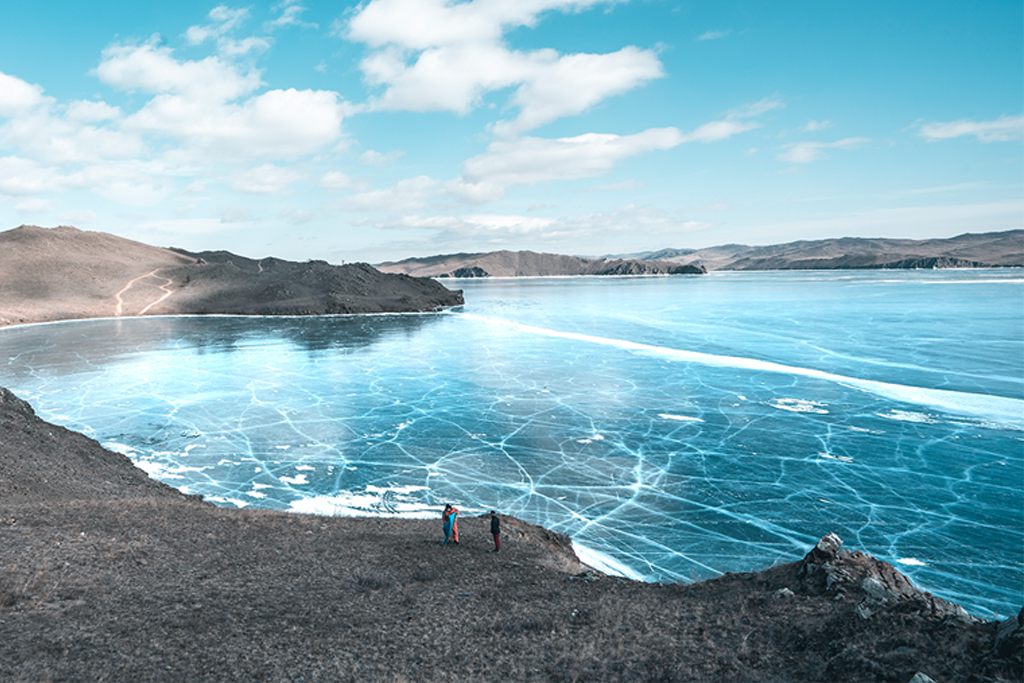
The introduction to diving in nearly freezing temperatures was simplified by diving where the lake drains into Angara River and the ice cover is broken. The initial submersion into nearly freezing water was brisk to put it lightly. After a short time, the sensation in the divers’ exposed faces was lost and they were able to focus on the challenge ahead. They performed buoyancy tests and seemed to be getting the hang of it. After the first day Alfie was left feeling somewhat confident in his ability, but the new environment was not done testing him.
On the next excursion they learned about creating an entry/exit hole in the ice known as a “maine”. The exact ice depth was determined using probes, while chainsaws and other manual tools were used to remove layer after layer. Even in these preparatory stages, timing and accuracy were crucial. Breaking through the water level too soon would cause the maine to flood and the process would be rendered impossible.

After conducting a review of the safety system, the teams were divided into groups, pairs underwater with someone on the surface at the other end of the safety rope. There would also be a rescue diver ready to enter the water at a moment’s notice. Just under the surface, the divers were met with a steep wall encrusted with green sponges and a series of canyons to explore. Without a camera at this stage Alfie was focused on mastering the technique and navigating through the frigid waters.
After the dive they retreated to the hut, a wooden two roomed structure on the ice heated by a wood burning oven where they warmed up with sala (smoked pig), fresh bread and black tea while reflecting on the day’s experience. Another essential and enjoyable part of recovery was the banya – the Russian version of a sauna. One of the dive instructors aptly said, “Sala helps you to survive and banya helps you to revive”. It was critical that they regained strength and focus, the next day was to be the first dive with cameras.
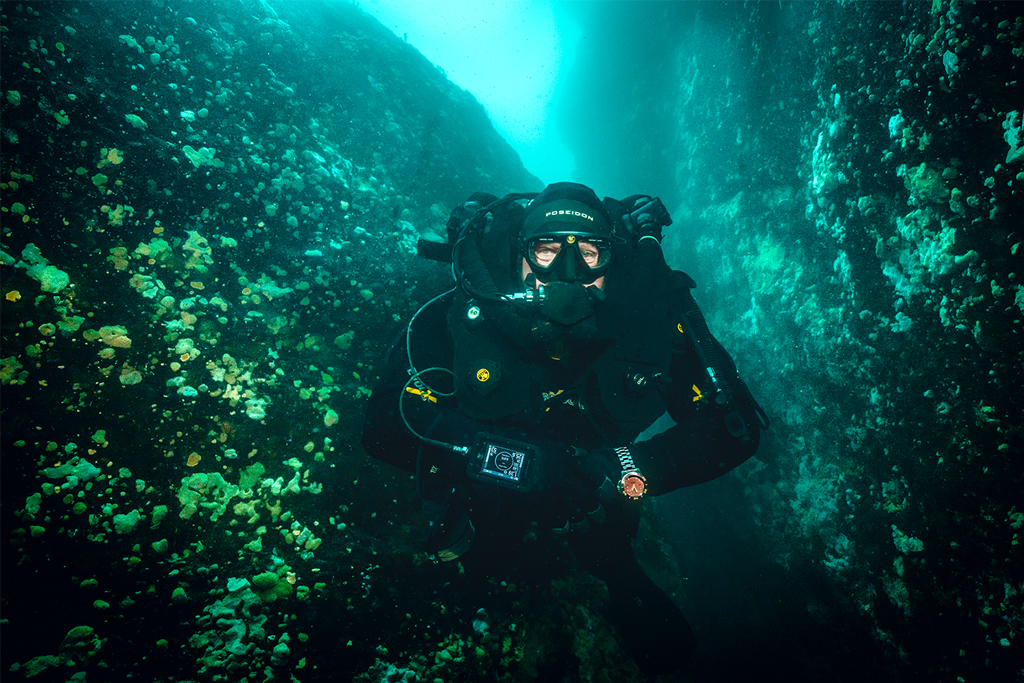
The journey brought them further out onto the lake where the water was deeper and a wall plunged down to 50m with a cave at 20m which appeared to be a great spot for photography. It was determined that Andrey would be Alfie’s first model with divemasters accompanying them while Sasha remained at the surface to manage the safety line. Alfie took hold of his camera and started the usual process of checking his equipment before quickly realizing something was not right. He descended rapidly, inflating his BCD in an effort to stabilize but couldn’t get the buoyancy right as he bobbed up and down. Clearly bad habits formed in warm saltwater do not work well in fresh, near freezing water. Alfie’s camera was way overweight with extra lights and he did not give the dive the necessary respect. It was a disaster and an embarrassment. Meanwhile, Nicolai, with a mutually buoyant camera was doing exceptionally well. Back in the hut, Alfie was surprisingly not criticized too harshly by Andrey and his colleagues, but rather given a few practical suggestions for improvement.
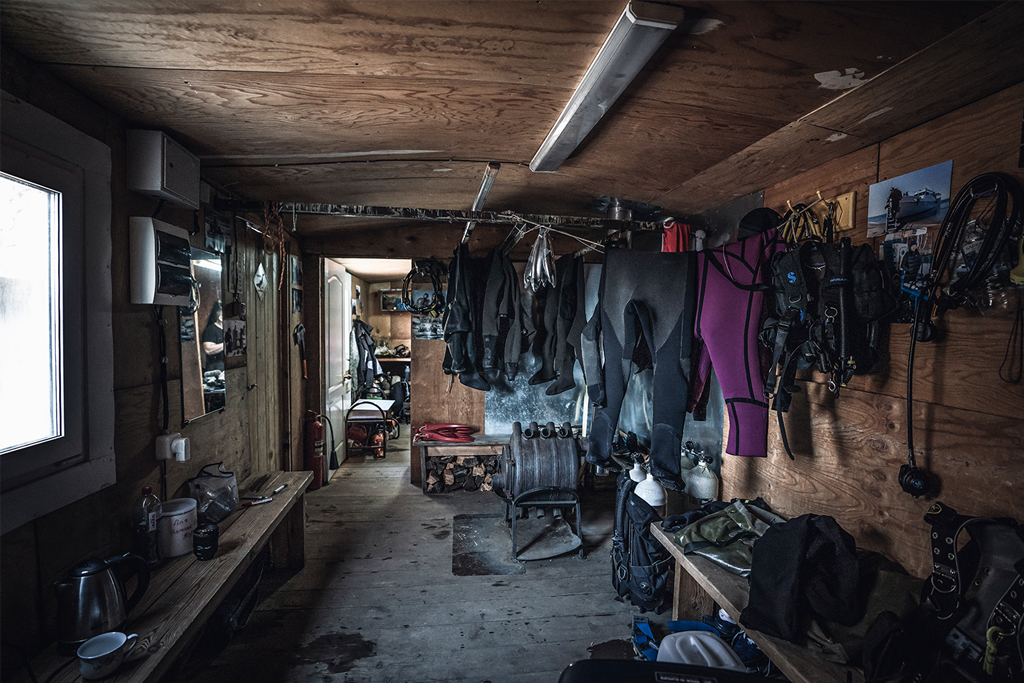
The next dive went a lot better for Alfie as he reduced the weight of his equipment by 2kg and switched to another BCD. With his Delma watch always present and the unidirectional bezel set to measure the time between safety checks, he was finally able to focus on the incredible surroundings. As he became more confident in his ability, the lake became increasingly beautiful. This was the start of a series of dives, experiencing the magic of Like Baikal.
After days of capturing thousands of photos and video clips, the lifechanging trip came to a close. In the words of a local divemaster:
“You dive in the tropics to see what is inside the ocean. You dive in lake Baikal to see what is inside yourself.”
Delma’s watches were present to aid the team throughout the experience and stood up to the test of ice, but it was Alfie’s perseverance that allowed him to document them in one of the most formidable places on earth. As he stepped out in to the balmy Bali air, it was a welcome reminder that he was home, but this was an experience he would never forget.

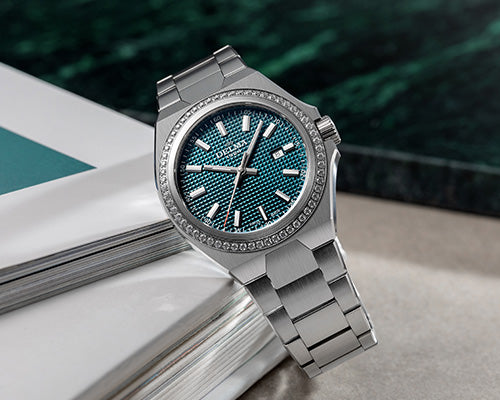
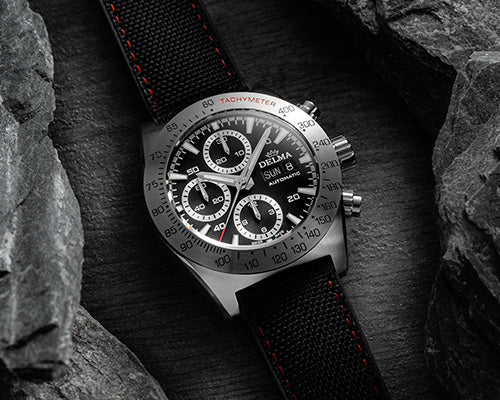
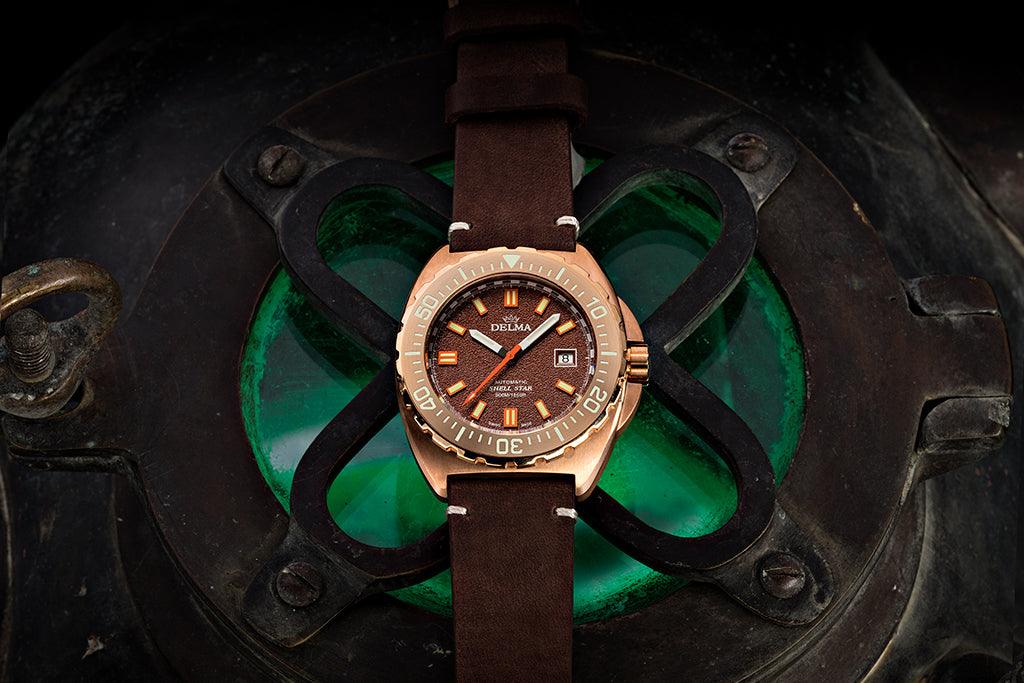
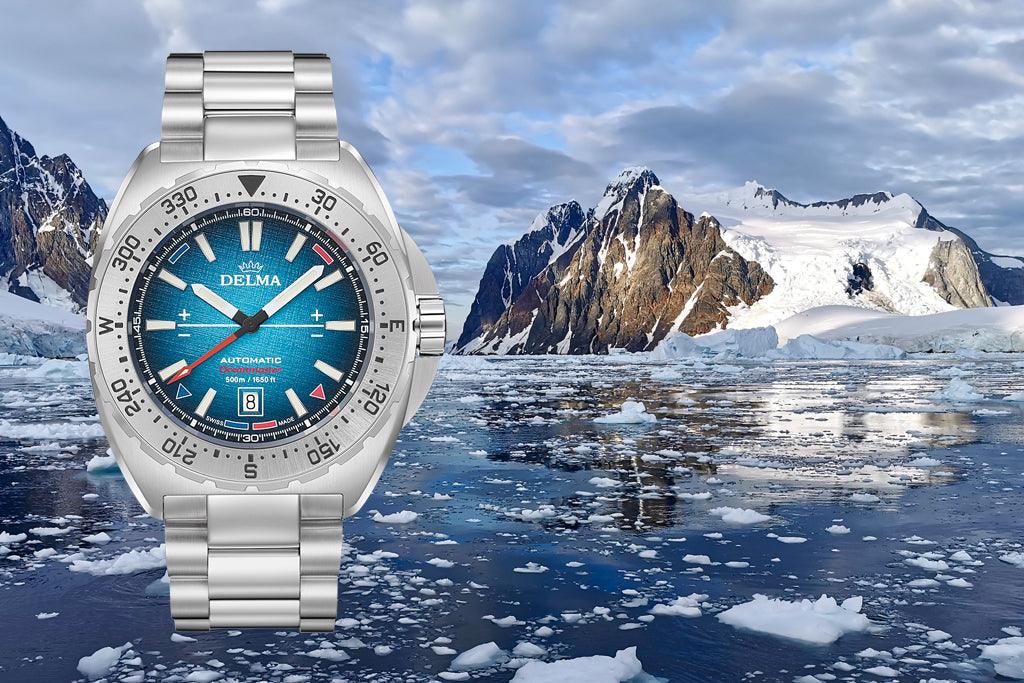
1 comment
Delma Uhren sind nicht nur für die Profis konzipiert, ich selbst besitze drei Delma‘s, Blue Shark ll & lll und die Shell Star Black Tag.
Die trage alle drei Uhren sehr gerne, sie sind zuverlässig, sehen sehr schick aus und haben ihren eigenen Stil.
Seifert
Leave a comment
This site is protected by hCaptcha and the hCaptcha Privacy Policy and Terms of Service apply.